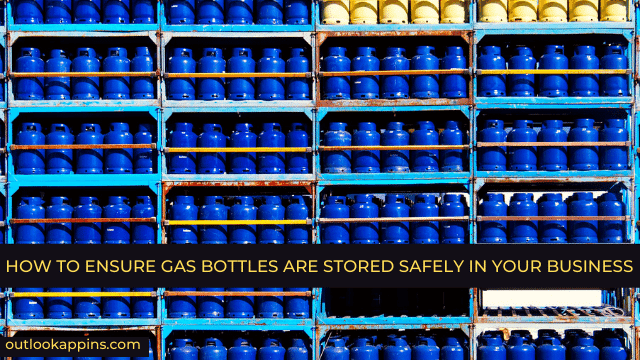Gas bottles are a common sight in many workplaces up and down the country. They come in useful for a variety of different purposes but they can pose quite a serious risk if handled incorrectly or misused.
Keep reading this handy guide to find out how you can ensure all gas bottles within your work environment are stored safely and securely.
Inspect Gas Bottles Carefully
If you receive a gas bottle that has rusted, has inoperable caps or shows any signs of leaks and damage, it should be rejected immediately as it may have been tampered with and is unsafe for use.
Label and Identify
Labelling gas cylinders is a simple, practical way to improve safety. Each gas tank should be marked by a tag or label with the list of contents stamped or stenciled on.
Storage areas should also be clearly labelled with the name and the hazard class of the gases stored and used – and unused gas bottles should be segregated. The weight of the bottle will be a clear indicator as to whether it is empty or full. The contents of a gas cylinder should never be emptied into another.
Transportation
The majority of incidents and injuries involving gas cylinders occur during handling or transportation, which is why all safety precautions need to be taken before moving gas bottles from one place to another.
One way to do so is by using strapping to secure the bottles to pallets, wooden crates or other structures during transit to protect them from damage during transit, and protect anyone who works in the area too.
There are two types of strapping. Steel strapping is very strong and is primarily used to secure extremely heavy loads; plastic strapping is much more flexible than steel which makes it resistant to shocks and bumps without snapping. Plastic strapping is also waterproof and resistant to corrosives, making it an ideal choice when transporting gas bottles.
Avoid lifting gas bottles and cylinders by their caps or guards or with magnets or slings, which can damage the valves, causing unexpected and dangerous leaks. And always remember to follow proper procedures and use the right equipment, including safety glasses, heavy-duty gloves and protective footwear when dealing with gas bottles or any other hazardous item.
Read Also: The Advantages of Learning Online Course on Business Analytics
Storage
Making sure that gas bottles and cylinders are correctly stored gives you peace of mind when they are not in use. All gas cylinders, used and unused, should be stored upright and secured, usually with a chain.
HSE guidelines should be followed for maximum safety for yourself, your staff and any equipment you have in your workplace. They include:
- The maximum size of any LPG cylinder stack should not exceed 30,000kg
- Cylinders should be stored preferably in the open air on a concrete or load-bearing surface
- Containers should be stored with their valves uppermost
You should also make sure that all gas bottles are placed on even ground as, if they are not, you run the risk of them falling over and leaking. Make sure to keep your designated storage area away from any water and flammable sources for maximum security.
Restrict Entry
One of the main ways to prevent accidents and promote safety is to stop any unauthorised access to the gas bottle storage area. Ensure that your storage area is located well away from busy paths or areas on your business premises, and well away from any customer or visitor contact areas.
Author Bio: First Mats started life as safety matting specialists, but have since expanded to become a complete industrial and commercial supplies company. The focus of First Mats is to provide safety-focused products that improve the wellbeing of staff through quality approved products, backed up by extensive knowledge. www.firstmats.co.uk.

Hello, My name is Shari & I am a writer for the ‘Outlook AppIns’ blog. I’m a CSIT graduate & I’ve been working in the IT industry for 3 years.
